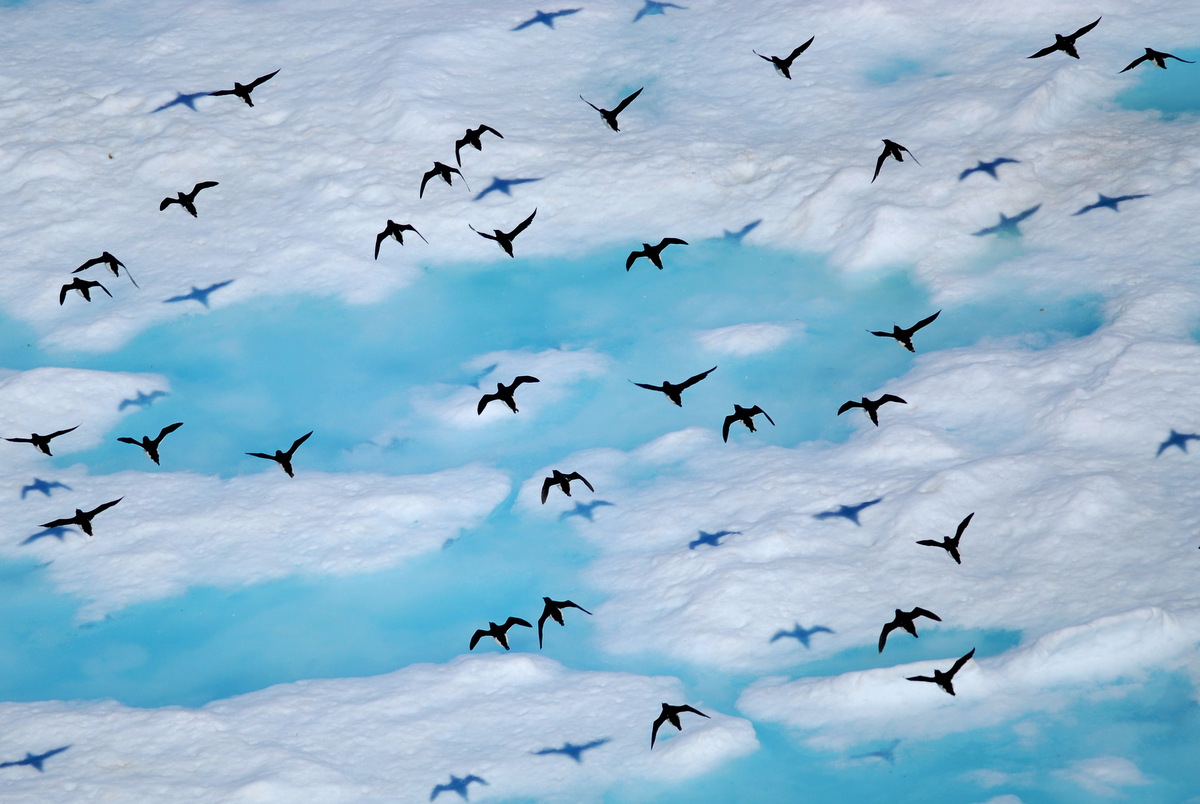Alterations in algal bloom patterns in the Arctic may cause problems for seabirds
Timing of sea-ice melt has great significance for marine productivity and is an important driver of energy transfer to higher trophic levels along the food chain. A recent study reveals that interannual changes in the timing of ice melt and marine productivity influences seabird reproduction on Svalbard.
Sea-ice algae begin to grow within and under the sea-ice in early spring, concurrently with increasing day length and with the start of the ice melting process. Several weeks later, after the break-up of the ice, a pelagic phytoplankton bloom starts in the open water masses. Together, these pulses of marine autotrophs form the base of the Arctic food web, since the algae are food for zooplankton, which, in turn, are eaten by fish and other larger organisms. Being in the upper levels of this food web, seabirds are dependent on the algal bloom occurring at the right time and having the optimal duration for them to find enough high-quality prey for themselves and their chicks throughout the short breeding season. By studying data on sea ice extent and chlorophyll-a around Svalbard, researchers have investigated how timing of phytoplankton blooms change from year to year, and how these changes affect reproduction among high-Arctic seabird species breeding on Svalbard.
Read the article:
An increased delay between ice melt, which is the driver of the annual ice-algae bloom, and the bloom of pelagic phytoplankton led to a sharp decrease in breeding success in little auks and Brünnich’s guillemots. The analyses also revealed that the timing of ice melt advances more slowly within the fjords, where the guillemots collect their food, than in the pelagic environment used by the little auks. This spatial variation in timing of sea-ice melt increases the uncertainty of predictions of climate-driven environmental effects on seabirds.
Contact person: Sébastien Descamps, Norwegian Polar Institute
